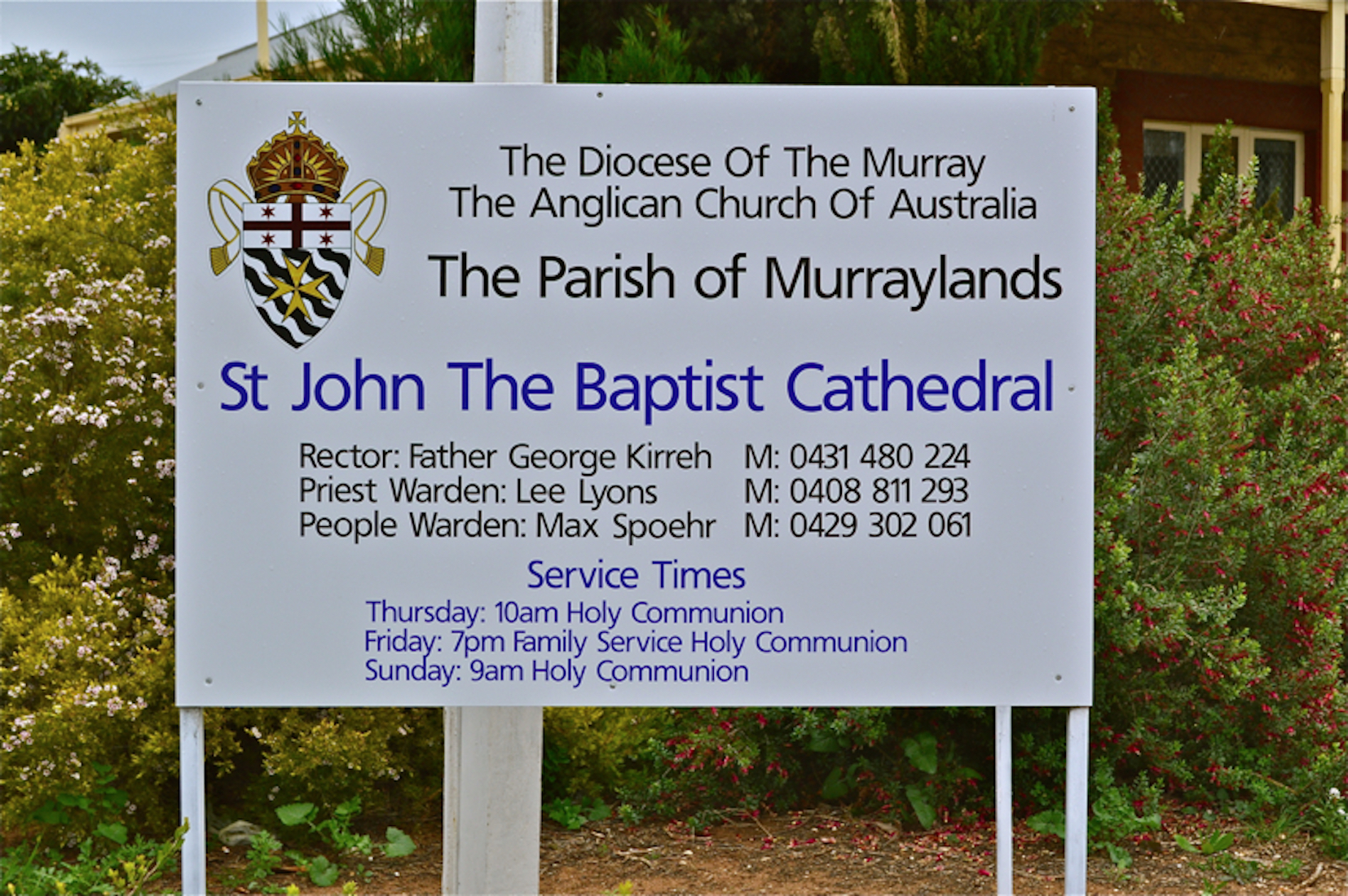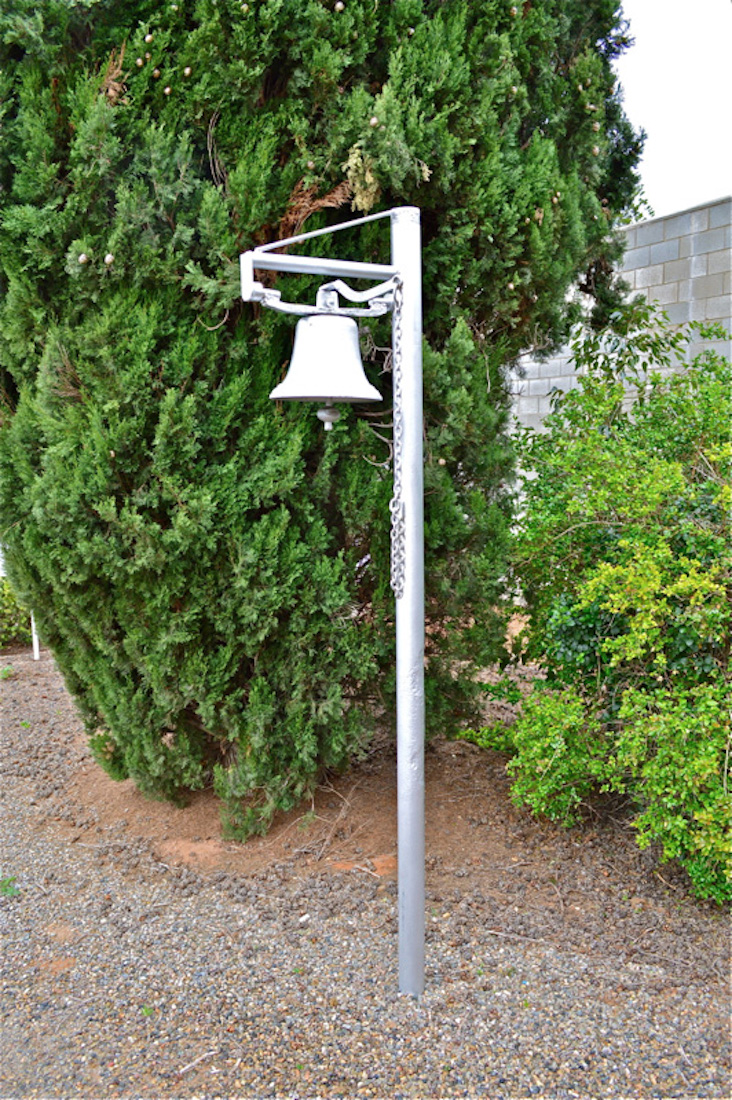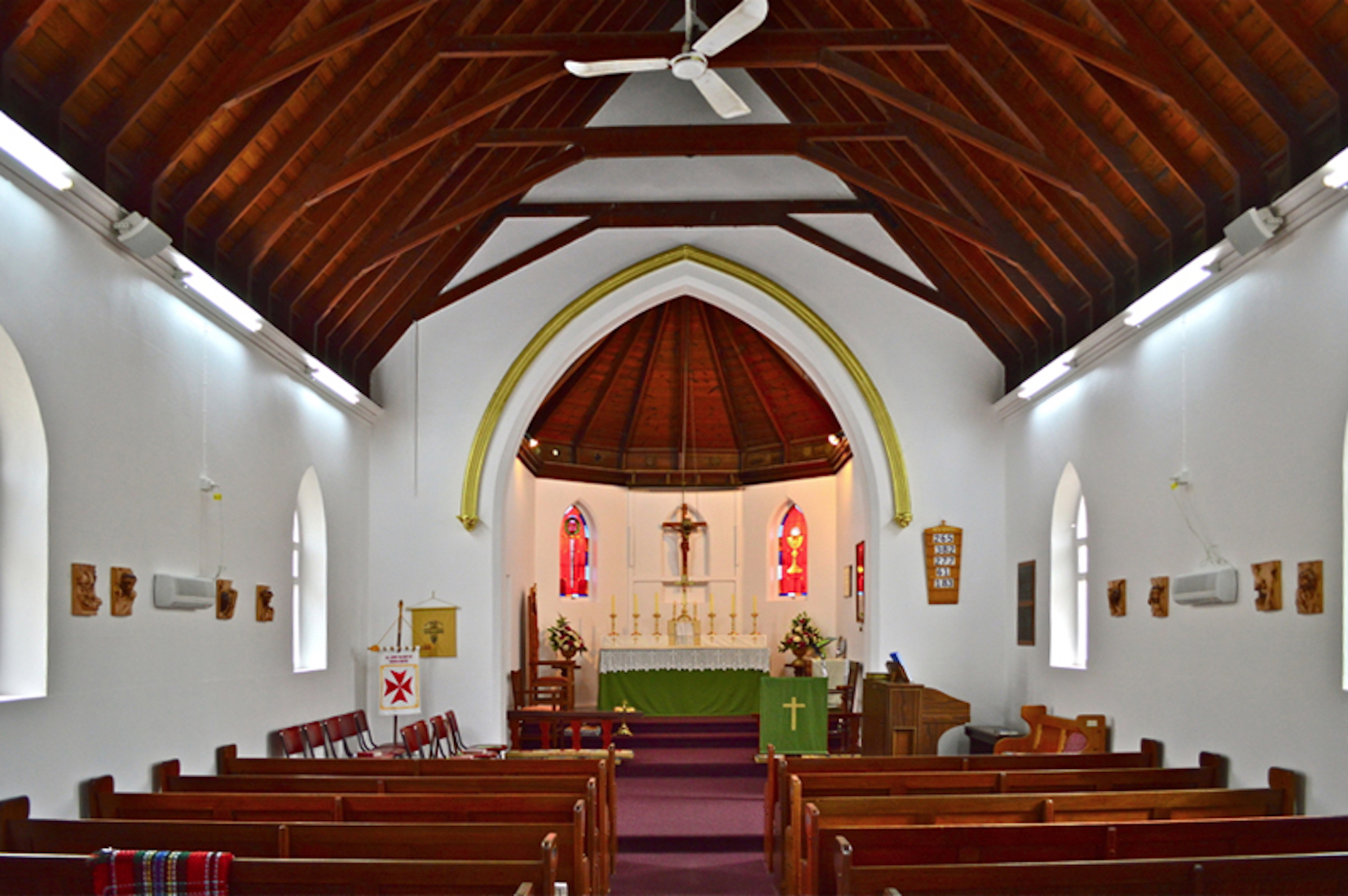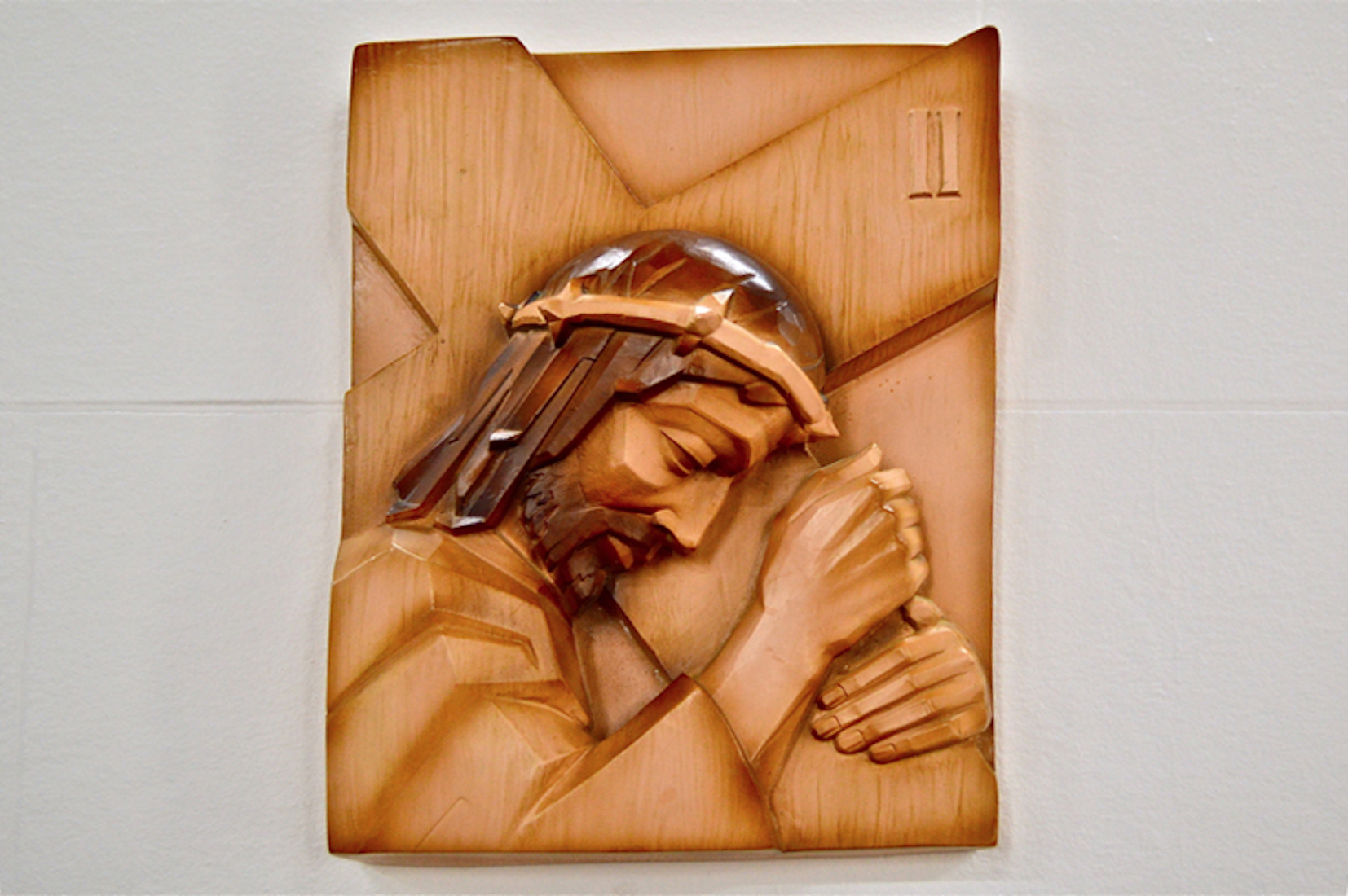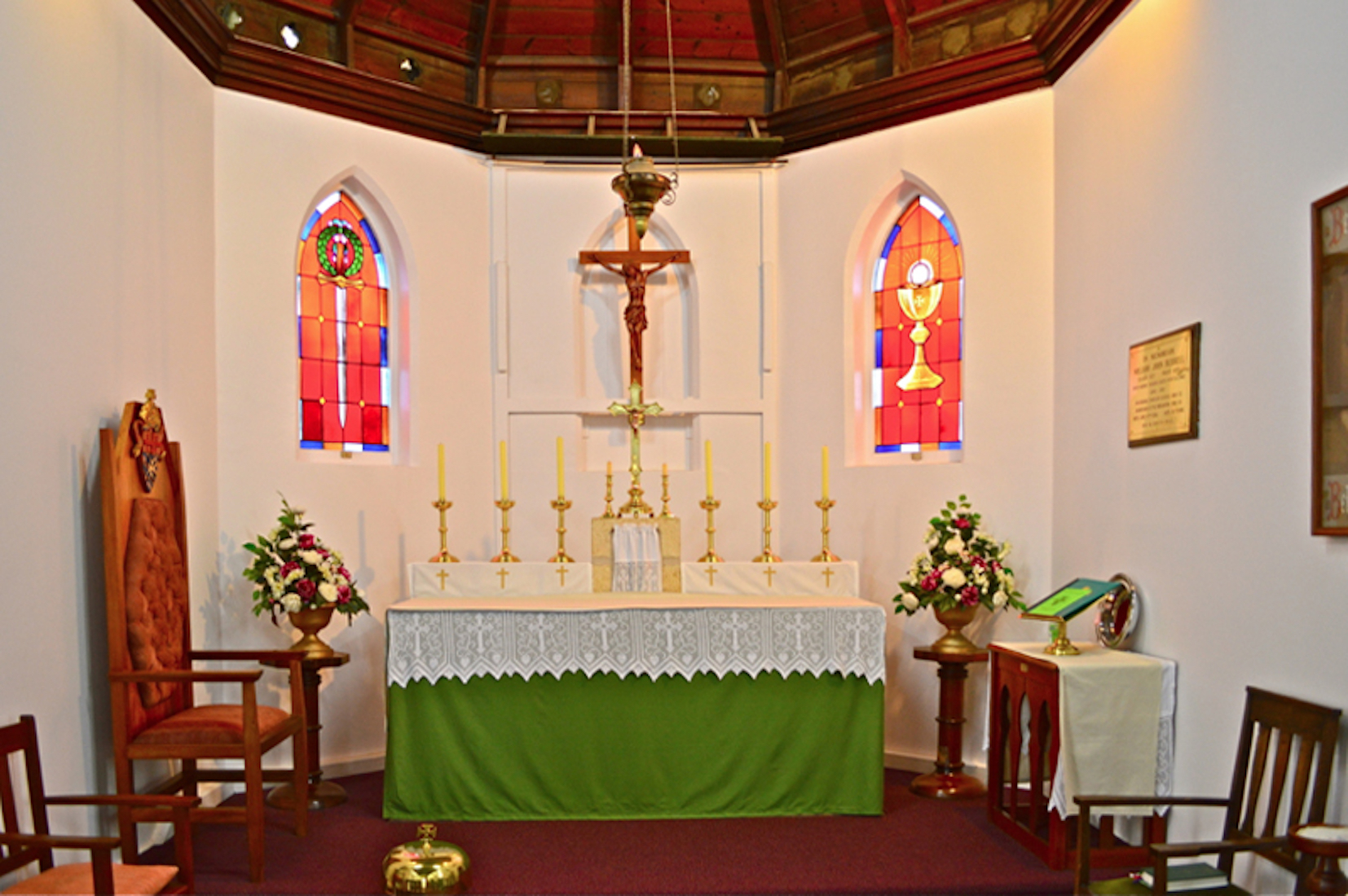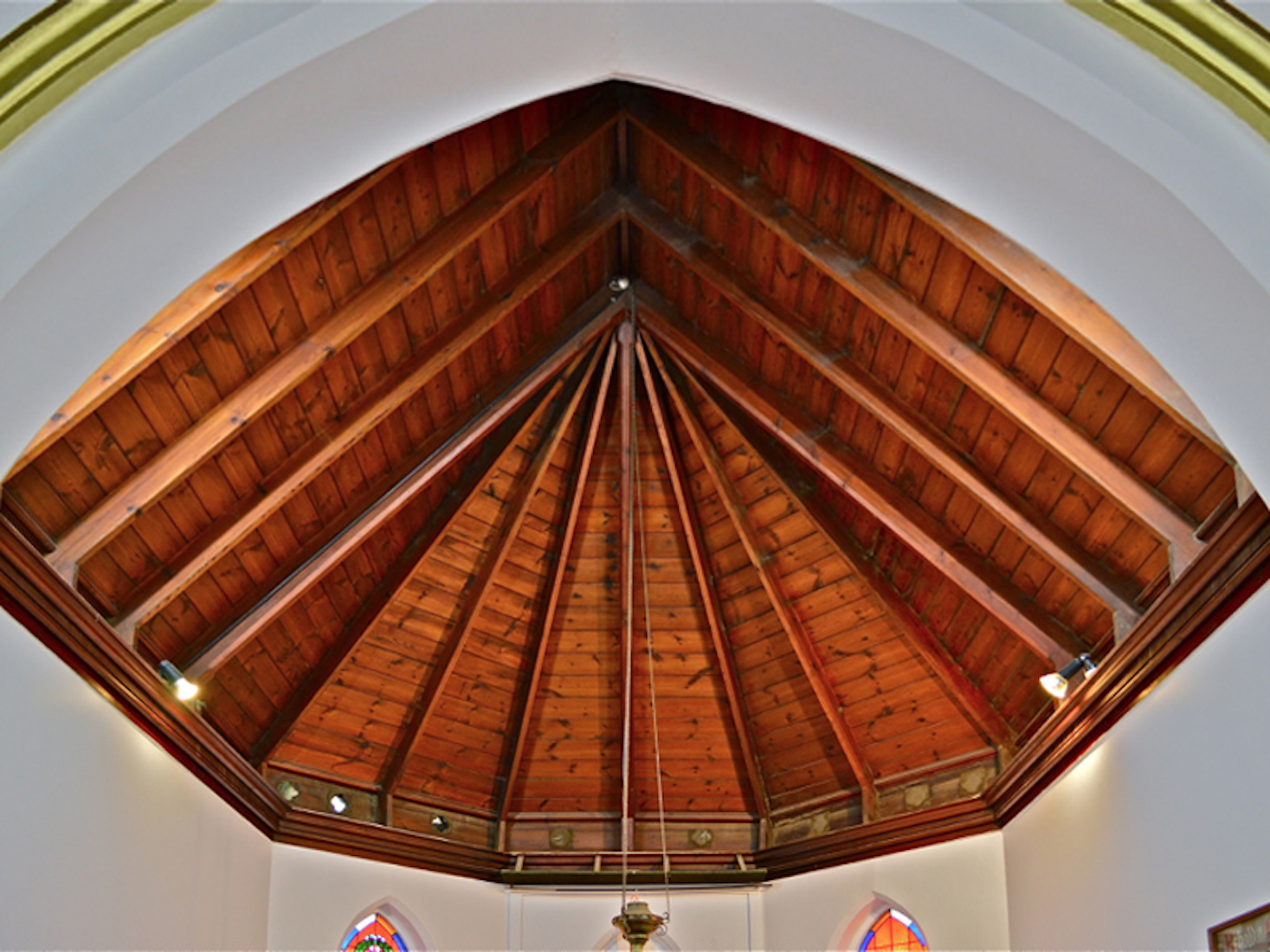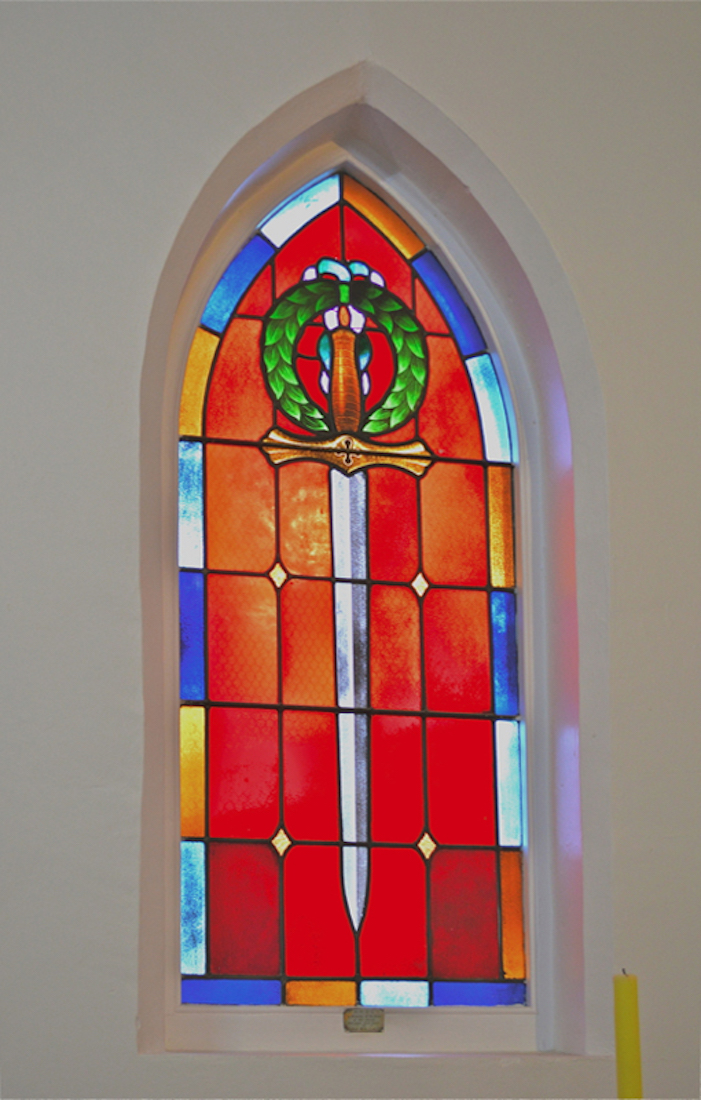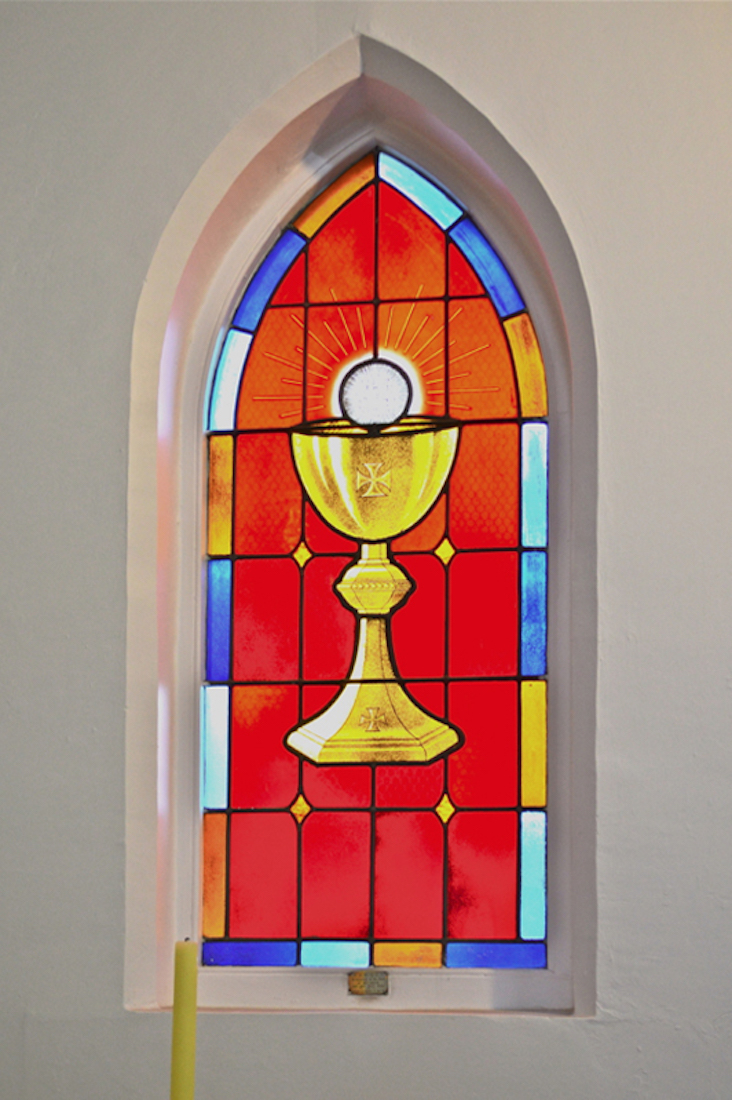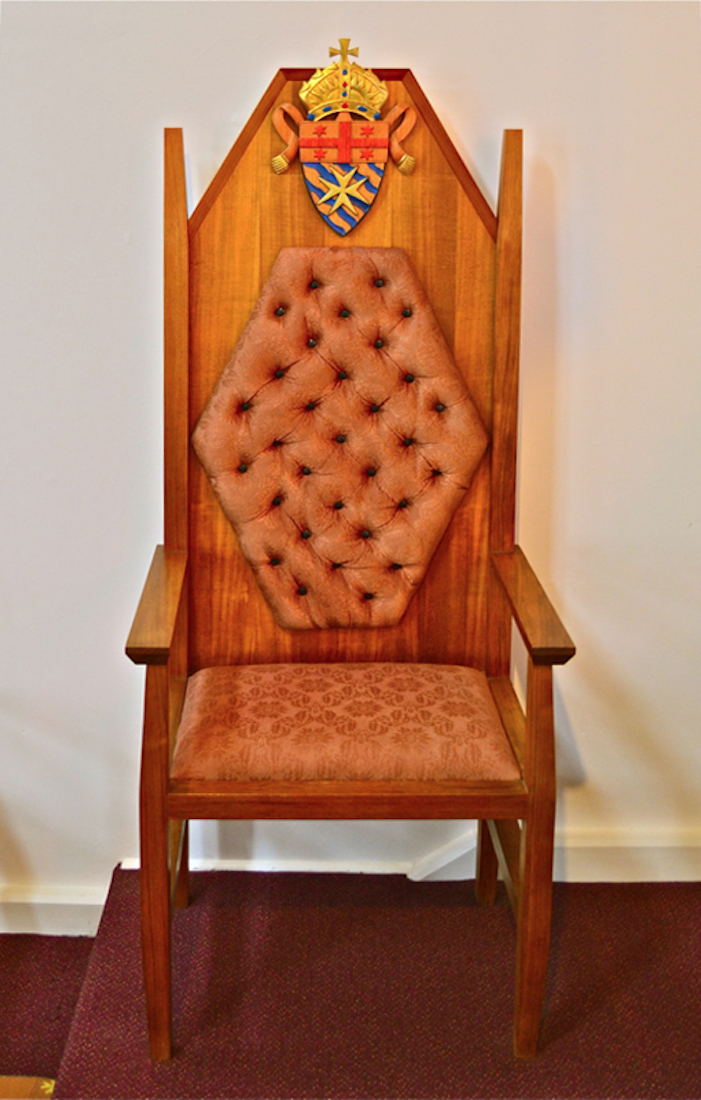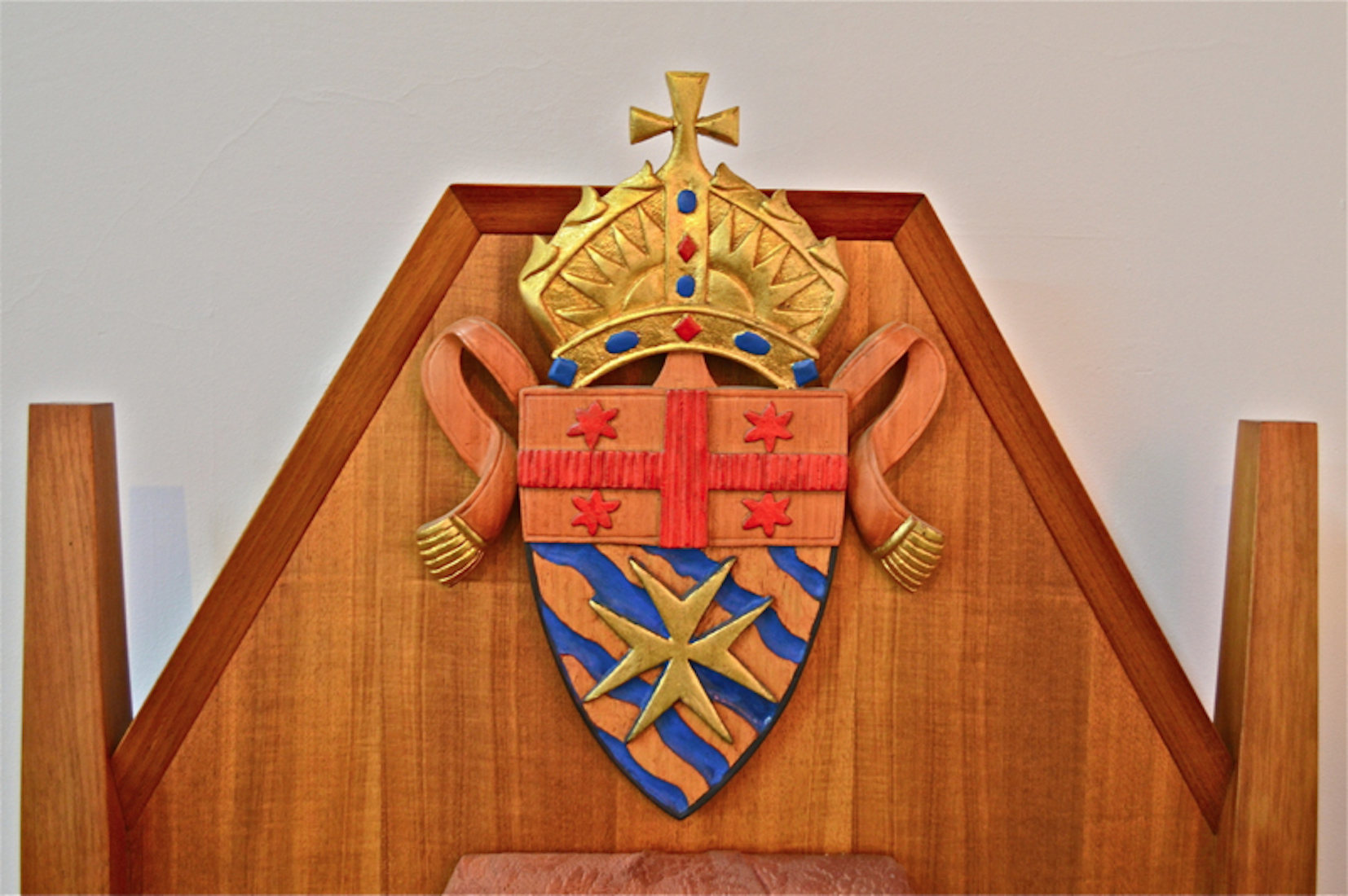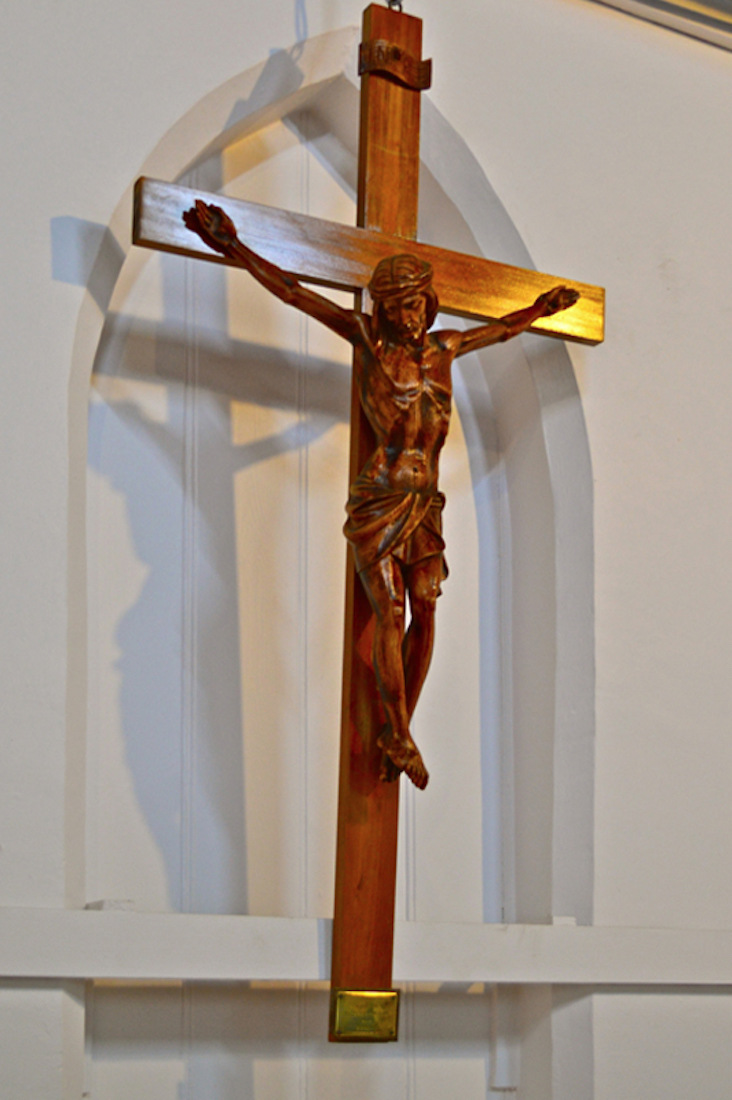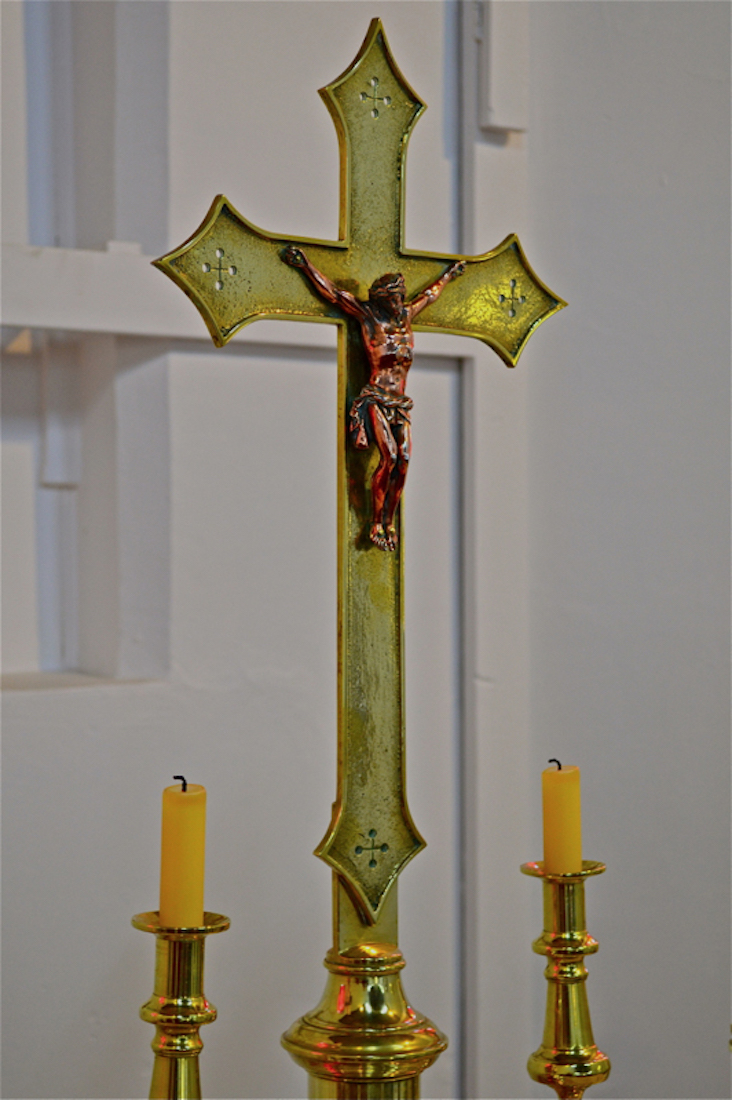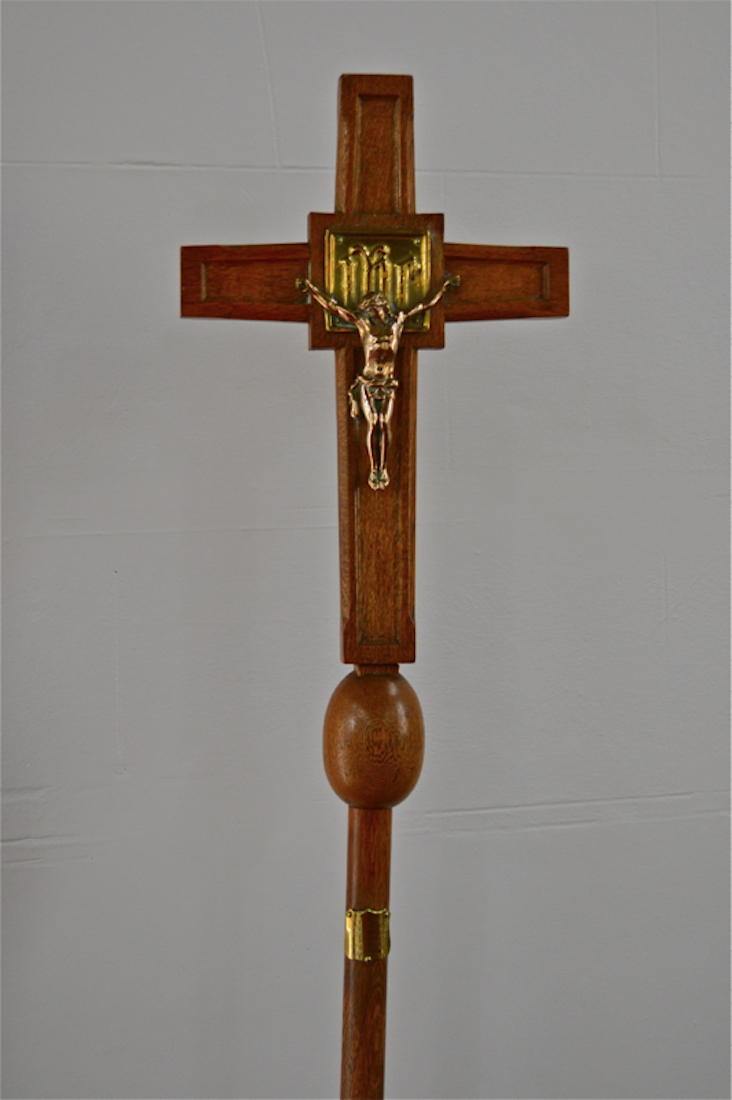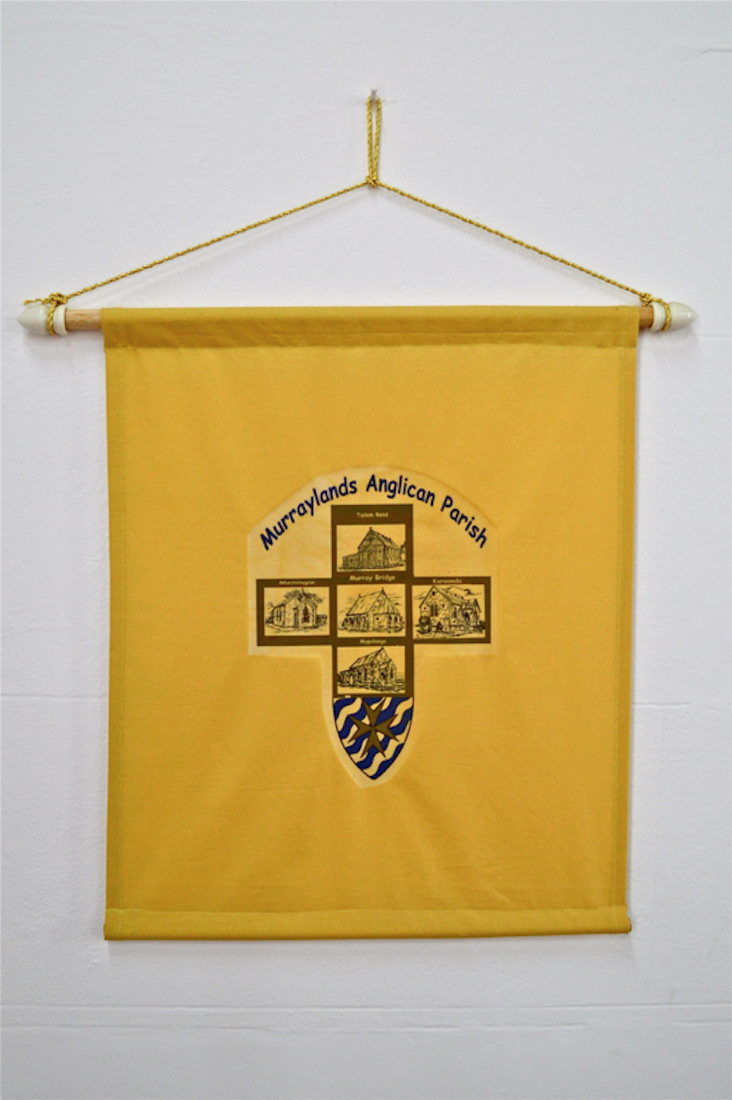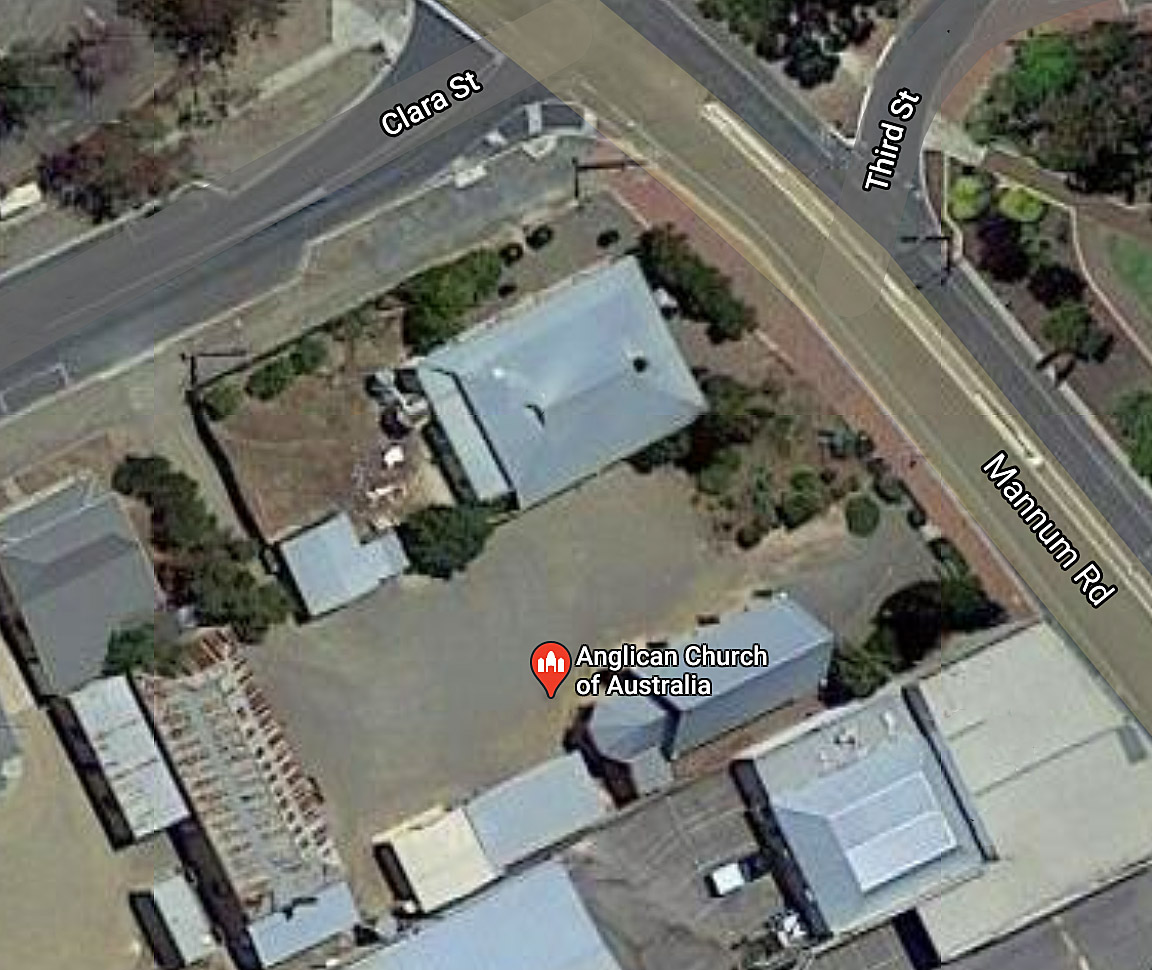
The St John the Baptist Cathedral in Murray Bridge has address 3 Mannum Road. It is just north of the Princes highway, and is set in a commercial area. There is ample parking, accessed from Clara Street. We have already commented on the plan of this Cathedral, but we can also note the orientation. The sanctuary (apse) faces in a direction a little south of geographical west. Here we shall use liturgical directions and denote this as East (with a capital E). PLAN
2. FROM THE ROAD
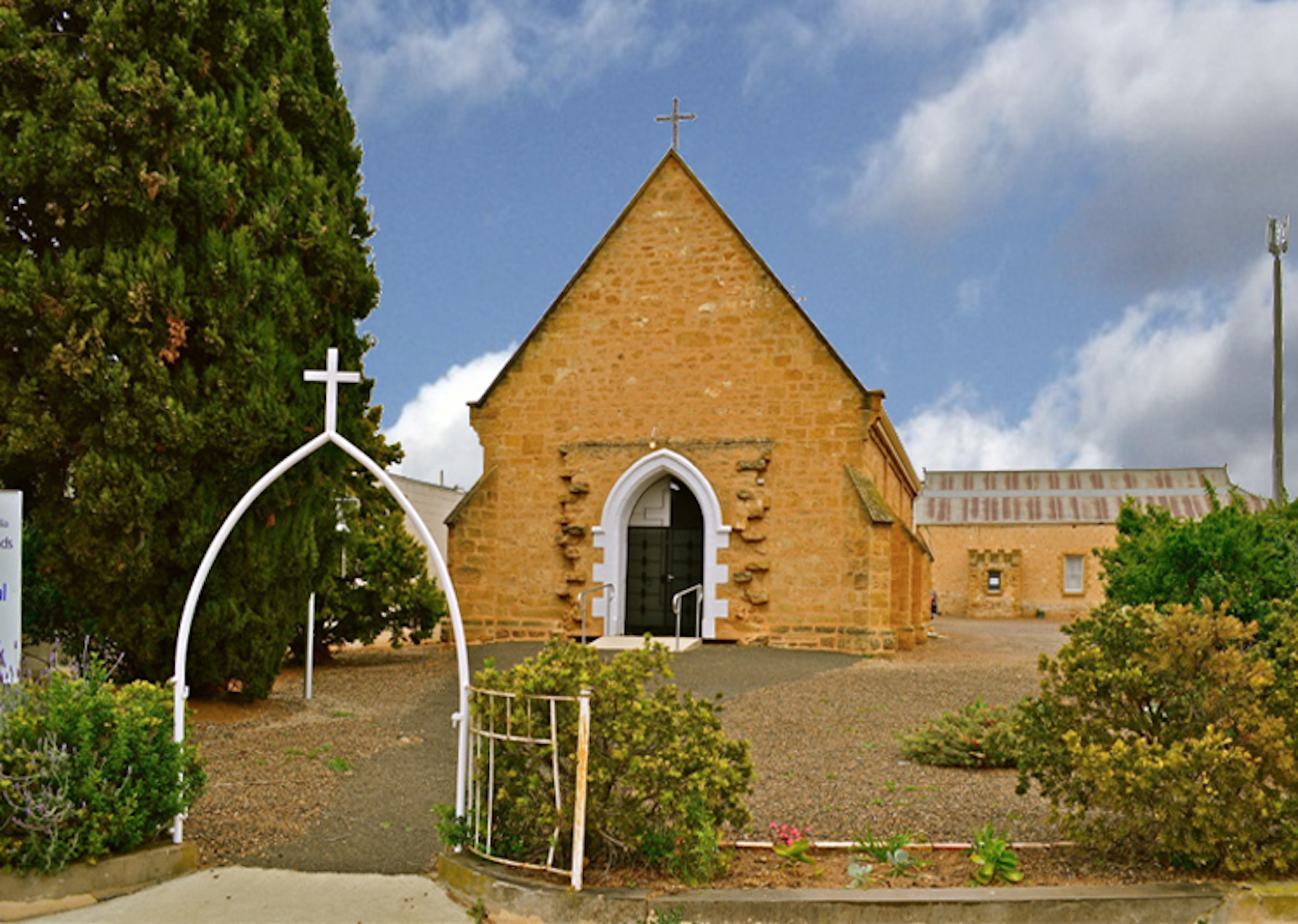
The St John the Baptist Church was built in 1887. It seems a rather humble little church to be a Cathedral, but of course that distinction is ecclesiastical rather than architectural. It became a Cathedral in 1970 when the first Bishop of the Murray was enthroned here.
3. CATHEDRAL SIGN
The sign at the front of the Cathedral proudly displays its status. The description of the Coat of Arms is interesting. ‘Arms were granted to the Synod of the Diocese by the Royal College of Arms on 29 March 1982. The heraldic description of the Arms includes a bendy wavy Azure and Argent Maltese Cross on a Chief Argent Cross between four Estoiles Gules. The chief (top of the Arms) bearing the red cross and the four wavy stars is taken from the Arms of the Diocese of Adelaide. The base depicts the waves and sand bars of the River Murray. The Maltese Cross (or the cross of St John the Baptist) signifies the patron Saint of the Cathedral Church.’ http://www.murray.anglican.org/coatofarms.htm
4. SOUTH WALL AND APSE
The view from the East end of the Cathedral shows the apse. There are three window apertures in the wall of the apse, but only the outer two are utilized.
5. OLD BELL
Out front of the Cathedral stands a small bell with a chain. I guess the bell is used to call parishioners to worship, but one might expect it to have some history as well?
7. NAVE ROOF
The timber roof structure has a pleasing simplicity which fits well with this unpretentious Cathedral. The fans are a necessity in a town which experiences blistering hot summers.
8. STATION OF CROSS I
The Stations of the Cross are particularly attractive. Here Jesus is condemned to death. He awaits his fate whilst Pilate washes his hands of the matter.
9. STATION OF CROSS II
‘Stations of the Cross’ (or ‘Way of the Cross’; in Latin, Via Crucis; also called the Via Dolorosa or ‘Way of Sorrows’, or simply, ‘The Way’) is a series of artistic representations, very often sculptural, depicting Christ carrying the Cross to his crucifixion in the final hours (or Passion) of Jesus before he died. The term also includes the devotions using that series to commemorate the Passion, often moving physically around a set of stations. Here we have Jesus carrying his Cross.
11. APSE CEILING
Anyone with a mathematical background cannot fail to appreciate the geometry of these roof timbers. In the hands of the craftsman, simple materials can be transformed into a beautiful creation. A parable of the work of Christ in His people ...
12. SANCTUARY NORTH WINDOW
I hope to obtain some information about these striking windows. Following the John the Baptist theme, this sword might have to do with the beheading of John? Or perhaps it is a reference to ‘the Sword of the Spirit’.
13. SANCTUARY SOUTH WINDOW
This window has a Eucharist theme, showing the wafer and the cup representing the body and blood of Christ.
14. CATHEDRA
The Bishop’s Throne is an interesting concept, because the word ‘cathedral’ derives from it. A cathedra (Latin, ‘chair’, from Greek, kathedra, ‘seat’) or bishop’s throne is the chair or throne of a bishop. It is a symbol of the bishop’s teaching authority in the Church. A church into which a bishop’s official cathedra is installed is called a cathedral.
15. DIOCESAN CREST
The Bishop’s Chair in the St John the Baptist Cathedral carries the Coat of Arms of the Murraylands.
16. CRUCIFIX
This crucifix stands immediately behind the altar in the central window niche of the apse wall.
17. ALTAR CRUCIFIX
This crucifix stands on the altar. Protestant churches usually prefer the empty Cross with an emphasis on Christ Risen, but the Crucified Christ is also a central focus to the Christian faith.
18. PROCESSIONAL CRUCIFIX
The processional cross is used to lead in the procession of clergy Sunday by Sunday.
19. PARISH BANNER
A banner for the Murraylands Anglican Parish. Five churches are illustrated here: the Cathedral at centre, and then clockwise from the top, Tailem Bend, Karoonda, Mypolonga, and Meningie. The shield at the base picks up on the Murraylands coat of arms design.
20. CATHEDRAL BANNER
What is the connection between John the Baptist and the Maltese flag? The Knights of St. John the Baptist, of Jerusalem, now commonly known as the Knights of Malta, can trace their origin to a group of monks attached to a hospice built in the Holy Lands in Jerusalem to aid travellers visiting the Holy Land. The monks were known as the Freres Hospitaliers de St. Jean de Jerusalem or The Knights Hospitalers Saint John. Their mission: ‘to care for our lords sick and our lords poor’.


